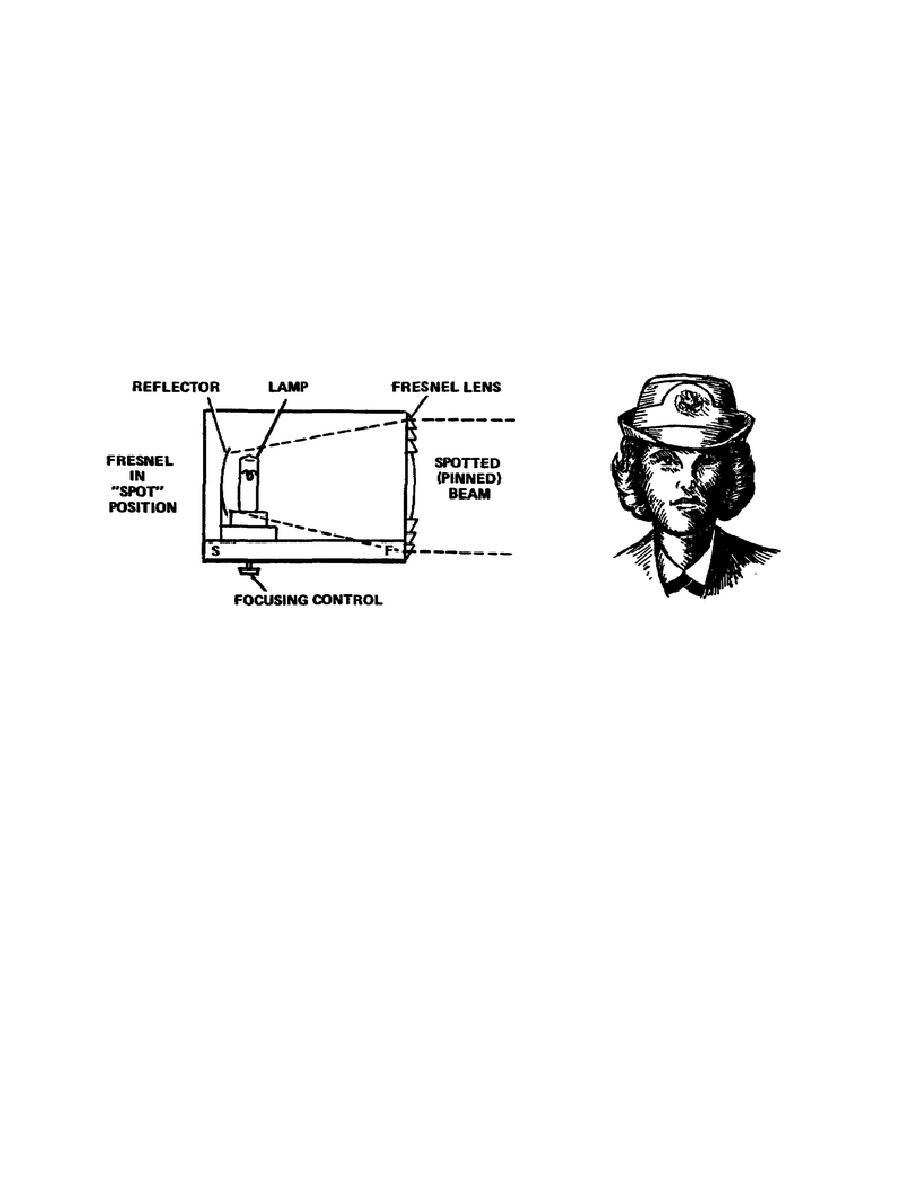
2. Television is a two-dimensional medium. That is, television shows height
and width. Lighting will add the depth needed. With depth, a scene appears
three-dimensional. This illusion of depth is further enhanced by proper use of
camera angle, set design, color, placement of talent and set pieces. Lighting
alone does not provide an illusion of depth, but without it your scene will
have an amateurish flat, look.
3.
Light can be described as either hard or soft.
a. Hard light is highly directional; a single stream of light pointing in
a definite direction (fig 4-1). The hard light defines features well; however,
the result may be harsh (fig 4-2). Hard lighting casts definite shadows which
need to be diffused by another light source.
Texture and form are revealed
under a hard lighting source. Hot spots are a problem with hard light, causing
glare.
Figure 4-1. Fresnel light in the "spot"
Figure 4-2. Effect of hard
position produces hard light
light
b. Soft light is diffused or scattered (fig 4-3).
It is not highly
directional like hard light, but nondirectional.
Soft light does not create
distracting shadows.
Misuse of soft light will make the subject look flat,
i.e., no depth. Soft, directionless light will spill over into an undesired
space. It is difficult to control soft light.
c. Dense shadows can be reduced with a soft light source (fig 4-4).
Remember, you do not want to eliminate shadows entirely.
A good way to
describe lighting is the proper use of light and shadow in proportion to each
other. Good lighting means good contrast.
73



 Previous Page
Previous Page
